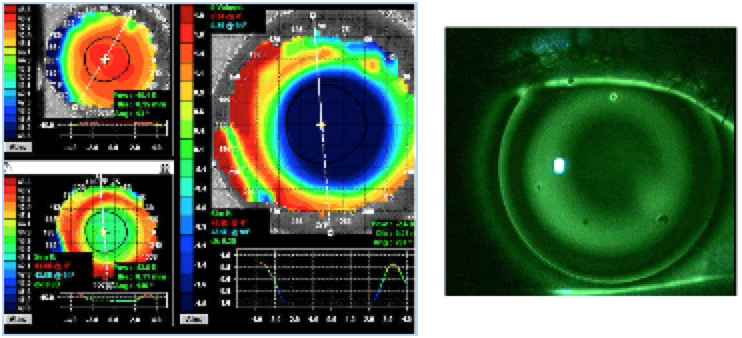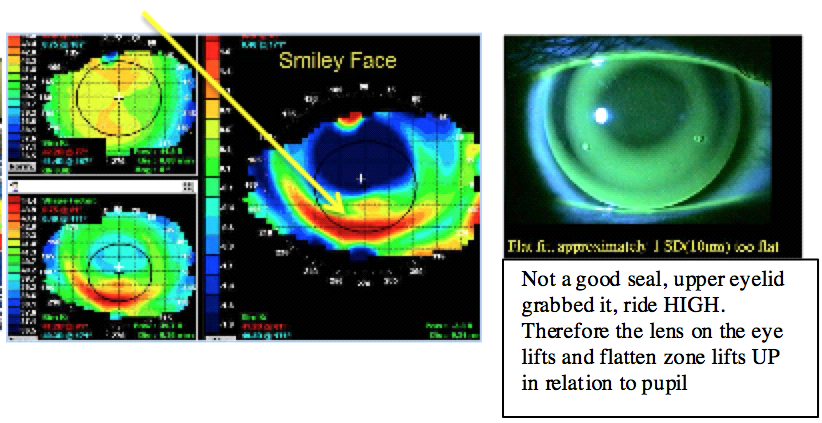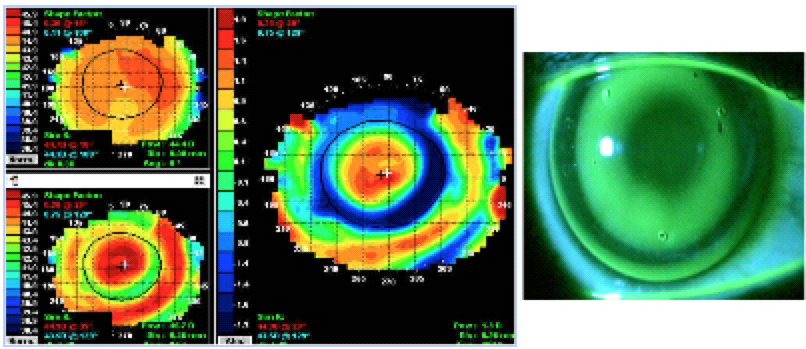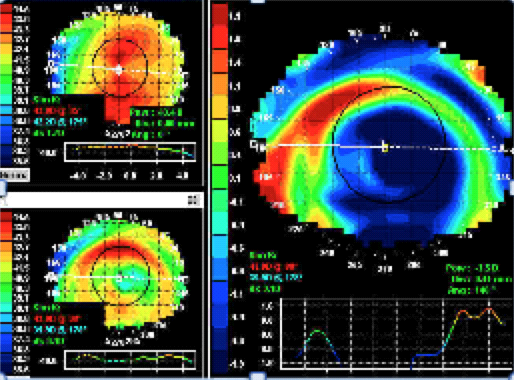In Orthokeratology, Axial, Tangential, Refractive and Elevation plots have different roles
- Axial: better to assessing treatment zone size and refraction change achieved
- Tangential: better for assessing centration and to assess seal of lenses overnight. It also assesses the position of the lens on the closed eye environment, for example the patient had a corneal scar, this plot may be ideal as it draws data at a 90 degree tangent to the surface. The tangenital map also helps us assess the effect of corneal reshaping.
- Refractive Power: better for assessing treatment zone size and quality of vision. Note: the more consistent or uniform the power, the better the quality of vision. This is not used independently, as it does not give us information on curvature or size and shape of the corneal surface.
- Elevation: height of the corneal surface compared to "best fit sphere" (in microns). Corneal elevation above the reference sphere is denoted in positive microns and is red, whereas blue shading denotes the corneal surface is below the reference sphere and is measured in negative microns. This may be helpful in predicting areas of excessive bearing (red or positive microns) or pooling (blue or negative microns).
We need accurate topography maps to predict corneal sag for an accurate lens fitting. Maps should be taken before and after lens wear so we can compared the changes, and use the subtractive function/compare function on the topographer to view this.
Displays
- Single View: This shows a single exam for the selected patient, a good tool for baseline screenings
- Difference/Subtractive/Compare Display: This shows the difference between two exams, for the same eye. It subtracts each measured point from one map to another. Flatter areas are displayed in cooler colours e.g. blues, and areas of steepening are displayed in warmer colours e.g. reds.
For example:

- Tangential Subtractive Plot:
-
- A big red ring appears here unlike in axial. This will tell you if the lens is sealing off at 360˚. Make sure that the ring lines over the pupil properly.
- Axial Subtractive Plot
-
- Look at the blue zone to assess size of treatment zone, whether it covers all the pupil and what the refraction change is
Potential Fitting Outcomes

• Bulls Eye result:
When the sag of the cornea is predicted correctly by the topographer and the sag of the lens matches appropriately

• Smiley Face
When the sag of the cornea is UNDERESTIMATED by the topographer and the sag of the lens is too shallow for the cornea, so that it touches centrally and then rides high on the eye overnight.

• Central Island
When the sag of the cornea is OVERESTIMATED by the topographer and the sag of the lens is too deep for the cornea, so that instead of flattening the cornea centrally, it actually steepens it.

• Frowny face
When the alignment curves on the edge of the lens are too TIGHT and the lens drops LOW in the closed eye environment (the sag does not matter in this case).